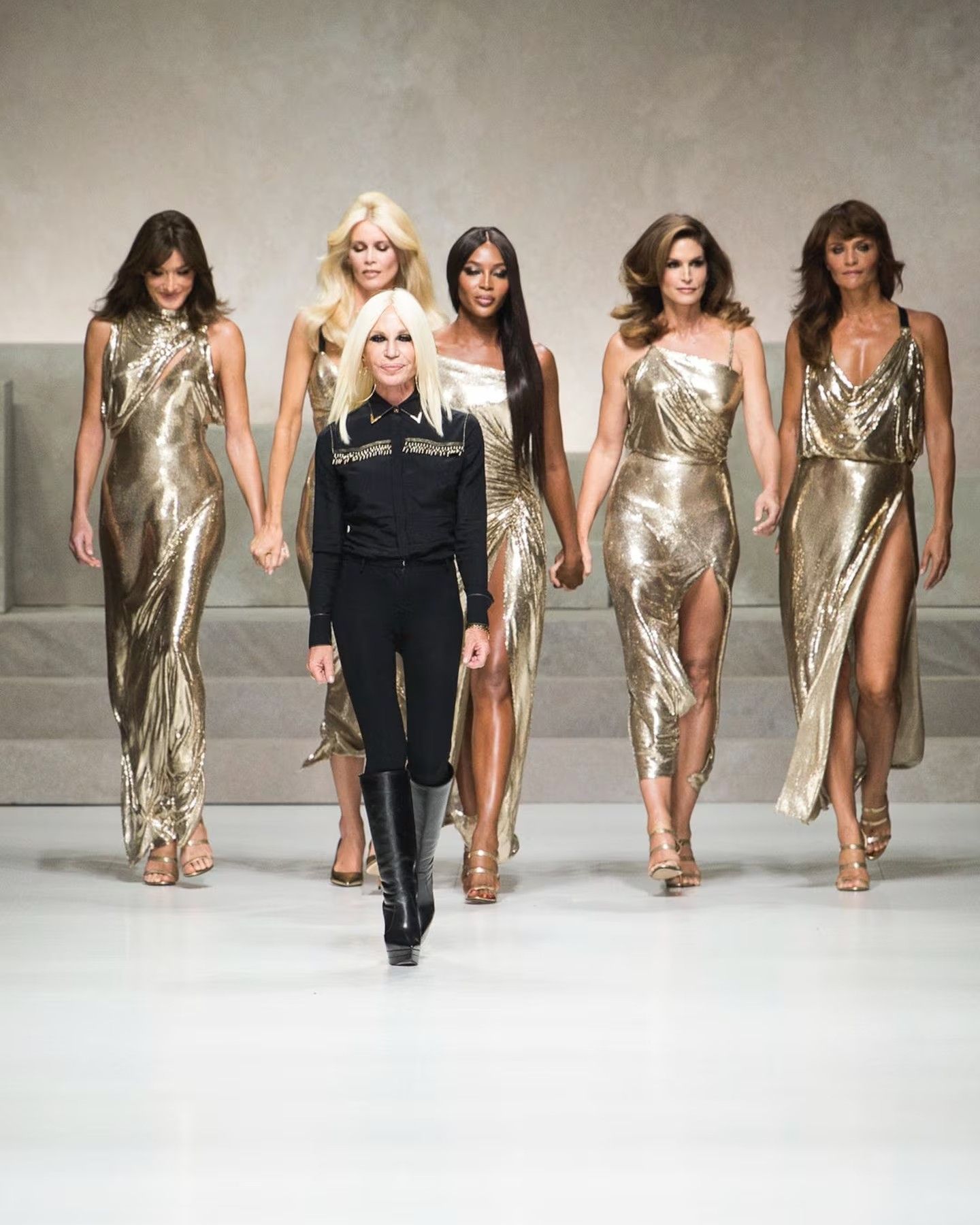
Can logos be sustainable? Prada's nylon and Louis Vuitton's lettering
They have placed it just about everywhere - from the classic logo on accessories such as handbags and belts to more recent virtuosities moved onto blazer sleeves or even on hair as seen at Gucci - showing its overt appeal to consumers of any generation. Embracing the larger theme of sustainability, some brands have recently decided to reshape their logos according to a low-impact philosophy. By smoothing out the corners and lightening the heritage, the logos almost seem to replicate the recycling symbol.
Louis Vuitton did it, launching a sneaker composed of 90 percent recycled material and featuring LV lettering ending in arrows. That today's big fashion brands are trying to highlight the efforts they have put into greater attention to sustainability is undoubtedly evident: Valentino added arrowheads to the ring around its "V "lettering accompanying the launch of sneakers that included recycled and bio-based materials. Prada's arrowhead logo first appeared in 2019 to signal its ambition to phase out all virgin nylon from its collections. Bringing together the consumption typically associated with the world of fashion and luxury with the desire to hymn a form of ecological virtuosity reflects, in a sense, the existing tensions between the fashion system and sustainable practices. Yet, the act of rehashing logos also speaks to an ongoing shift in the way the most powerful luxury players think about what drives brand value and, together, defines consumer attitudes.
Until recently, many major luxury brands were reluctant to talk about sustainability, and luxury consumers saw recycled or secondhand products as essentially undesirable. This is, in essence, marketing that could nevertheless help promote more sustainable consumption behaviors and products. «Branding should send a signal of authenticity,» Milton Pedraza told BOF, founder and managing director of consulting firm Luxury Institute. «Bigger and older brands think they have to do something to appear more modern and, as a result, more sustainable» he added. In addition, there is the pressure factor that inevitably comes to bear on brands as they strive to deliver on their promises to consumers. «Playing with something as iconic as the Louis Vuitton logo is a powerful movie», said Erin Allweiss, co-founder of communications firm No. 29, which represents brands whose activities focus on environmental impact. But it is also «incredibly risky», she concluded.












































